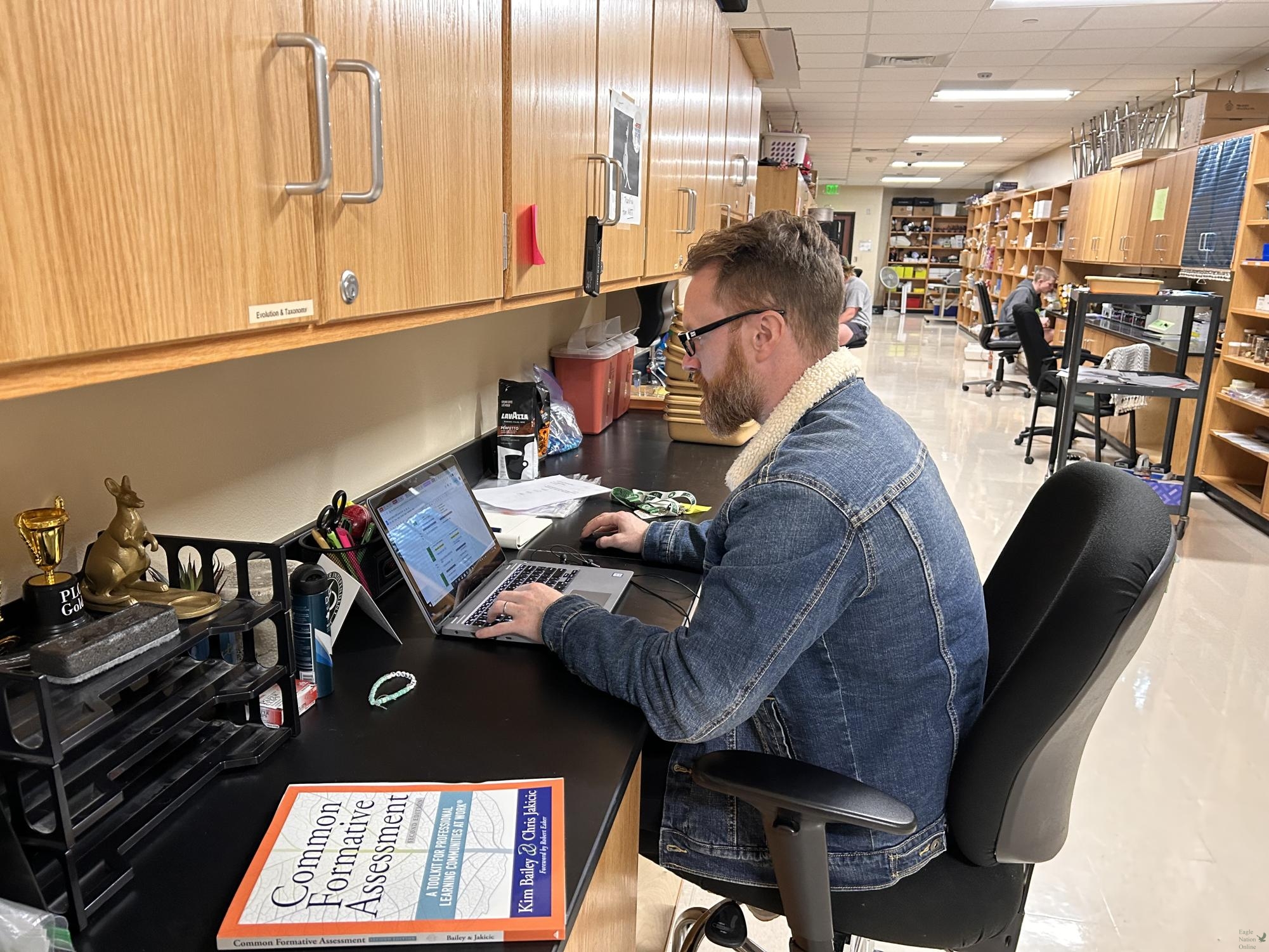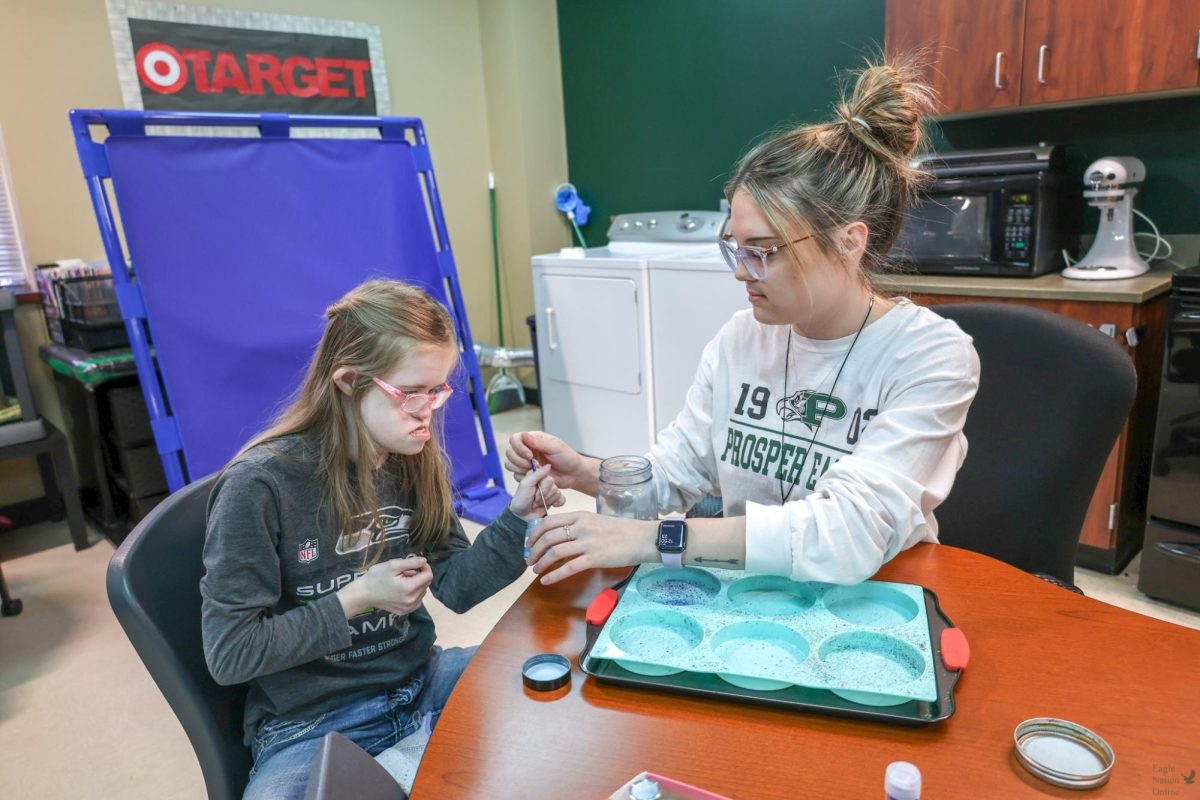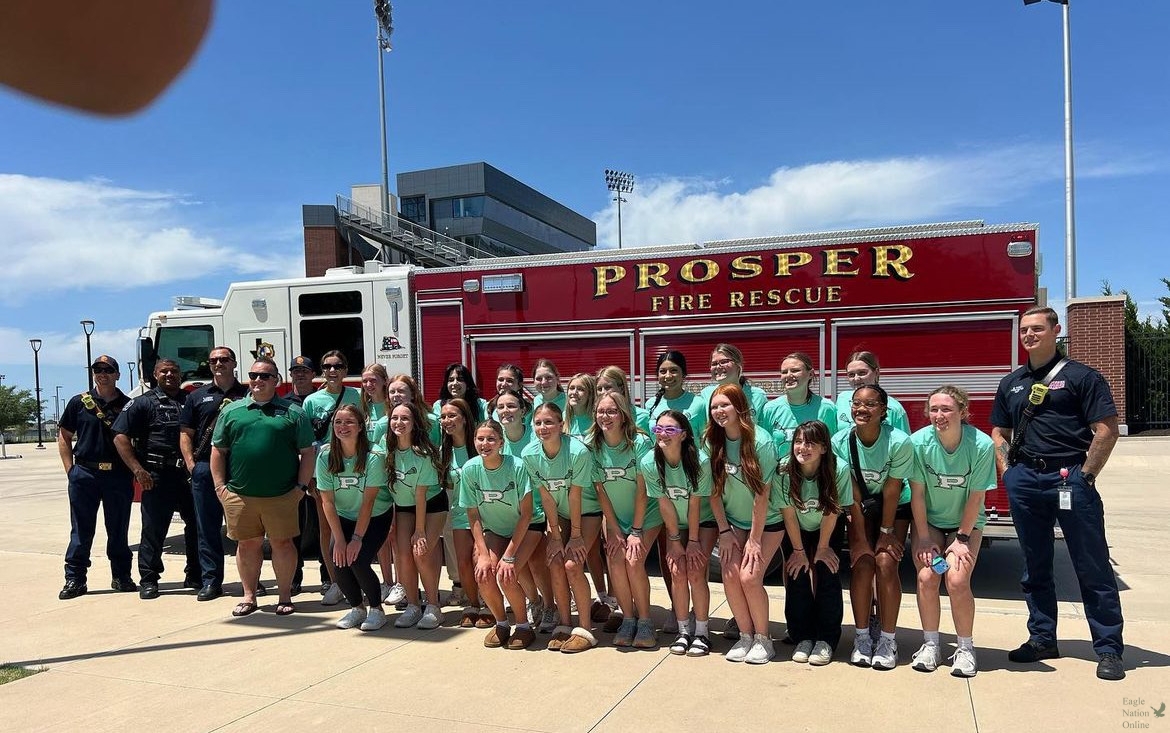With over 37 million people currently diagnosed and more than 1 million new cases every year, including some Prosper High students and staff members, diabetes has become one of the leading medical diagnoses in the United States.
Biology teacher Yolanda English initially wanted to start raising awareness for the issue after both of her twin daughters were diagnosed with Type 1 diabetes. A Type 1 diabetes diagnosis comes when the the body no longer produces insulin. According to the National Institute of Diabetes and Digestive and Kidney Diseases, it occurs when the body’s immune system attacks and destroys the beta cells (which produce insulin).
“When my twins were in elementary school, one of them became extremely sick, and the doctors couldn’t figure out what it was,” English said. “She almost went into a coma before they found out it was Type 1 diabetes.”
Exactly a year and a month later, the other twin started experiencing similar symptoms.
“Because she had seen her sister go through the same thing before,” English said, “she knew immediately what that cause was.”
Since being diagnosed, their day-to-day routines have changed significantly.
“For every meal, they would have to poke their finger, take blood, check their blood sugar, take insulin,” English said. “They were only allowed to have a certain amount of carbs per meal, and since they were both athletes playing basketball, it was pretty rough on them.”
Common symptoms of Type 1 diabetes are increased thirst, urination, fatigue and blurry vision.
“At night, people with Type 1 diabetes, have a drop in their blood sugar,” English said. “Between 2 a.m. and 3 a.m. is the highest chance for them to slip into a coma, so we would have to check their blood sugar levels every night.”
English said she would like students and staff across schools to be more aware of the seriousness of a diabetes diagnosis.
“Teachers would get mad at them when they asked to go to the bathroom often or when their speech was slurred, thinking they were playing around,” English said. “But, they’re actually really sick. Teachers would write them up, ‘like, oh, she’s not doing her work.’ ‘Her blood sugar is 400, what do you expect.’”
She wants more individuals to receive education about what diabetes is.
“Both Type 1 and Type 2 are equally dangerous,” she said. “If you don’t eat right, you could develop Type 2 at any age. There’s now teenagers in the United States who are being diagnosed with Type 2 diabetes.”
Type 1 diabetes usually occurs because of some change to the DNA, which is caused by contracting an illness. Biology teacher Matthew Nicholls was diagnosed with Type 1 diabetes at the age of 33.
“I was feeling all of the common symptoms of diabetes,” Nicholls said. “My feet were tingly, and I was drinking liters of fluid a day. So, I decided to go get a blood test, and when the results came back, it was positive for high levels of glucose.”
Type 1 diabetes typically affects adolescents and younger individuals, whereas Type 2 diabetes is more reliant on eating habits and exercise. Nicholls said the diagnosis came as somewhat of a surprise for him.
“It’s rarer for people to get diagnosed later on in life,” Nicholls said. “Regarding the genetic component, there definitely is a linkage between them. Type 1 (diabetes) runs in my family. My grandfather had it, and when I had asked my mom about what age he was diagnosed ,it was interesting that she had said 33, as well.”
“It’s not something people need to feel ashamed about. It’s just a part of who you are.”
— Matthew
Nicholls said stress, as an immune response, could potentially have a role in triggering Type 1 diabetes symptoms, as well.
“My wife, who is from Dallas, moved over here to plan, and with Covid going on, we were separated for about six months in between. She was living in the United States, and I was still living in Australia,” Nicholls said, “So, that caused a lot of added pressure.”
Nicholls takes about four to five insulin shots a day along with managing what he is eating in order to maintain his blood sugar levels.
“I’m open to telling my students about my diabetes,” Nicholls said. “There will be times in class when my alarm will go off to signal that my glucose is low, and I’ll normally just have to eat something to get my levels back up again.”
Nurse Caleigh Roll said that PHS has specific protocols for students with diabetes.
“Students at this age are mostly independent,” Roll said. “They have permission from their doctors to carry their pumps, and they know how to monitor their vitals.”
The clinic keeps kits that have food and drinks to maintain balanced blood sugar levels if the students ever need assistance. The clinic also helps students manage their glucose monitors.
“If there ever was an emergency, we have medicine that we would respond and help them with,” she said. “For the most part, they are all very independent and well-versed in their diabetes.”
Roll said they make an emergency action plan for any student that has diabetes, which is then sent to their teachers.
“We let them know that they may need to come to the clinic in the middle of class or while taking a test,” Roll said. “We have four staff members on campus that are licensed and have been trained to help diabetic students.”
She said the best way to raise awareness is to speak to diabetics about how they manage their daily lives.
“If you have a friend or family member,” Roll said, “ask them of symptoms that we could be aware of if they were high or low and that you could be there to help them.”
Nicholls said that one of the main differences he noticed when he moved from Australia was the price of insulin.
“I could get a year and a half’s supply of insulin for about $100,” Nicholls said, “as opposed to here where it’s more expensive.”
He said that spreading knowledge about how expensive insulin can be, especially here in the United States, can be beneficial for many diabetics.
“I think bringing awareness to it, for Type 1 diabetics especially since we need insulin to survive,” Nicholls said. “I’m very fortunate to move to Prosper where I have health insurance, but for people in my situation who don’t have health insurance, it’s really difficult for them.”
He said that exercise and maintaining a healthy lifestyle is something to raise awareness about, as well.
“It’s not something people need to feel ashamed about,” Nicholls said. “It’s just a part of who you are. It can definitely be frustrating at times, but it can teach you so many things as well.”
English said getting tested to make sure you are not pre-diabetic or diabetic could make a huge difference in someone’s life.
“Young adults do not believe that diabetes is something they have to worry about,” she said. “But now we are seeing a huge rise of cases in adolescents having Type 2 diabetes. That is scary.”
Knowing the causes and symptoms, English said, could save lives.
“I know people who have lost fingers, feet and eyes because they didn’t take care of themselves,” English said. “It really is a silent killer, and you won’t recognize it until it’s too late.”
Awareness and knowledge about diabetes are critical in both helping people with the disease, and working to prevent it. Test your knowledge about diabetes with with this quiz.

























